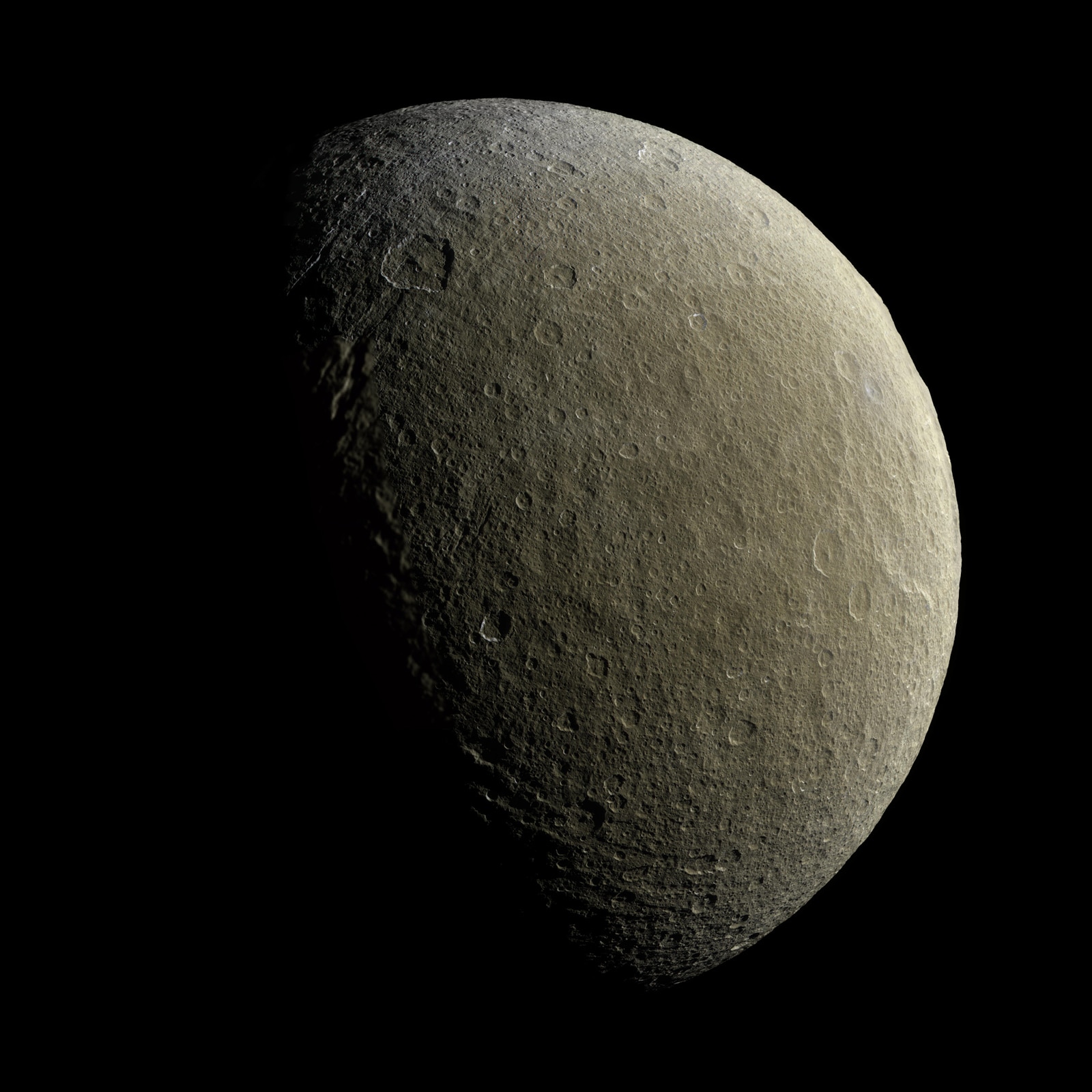Create a free profile to get unlimited access to exclusive videos, sweepstakes, and more!
Rhea

Over the past couple of years, the Cassini Saturn probe has been in what’s called a high-inclination orbit: Its trajectory around the ringed planet has been heavily tipped to Saturn’s equator, giving it views of the planet’s poles and broad views of the rings.
The plethora of weird moons orbiting Saturn are all in its equatorial plane, so there haven’t been any close encounters with them for some time. But the orbit planners recently changed that, sending Cassini back into a path that swings it past the moons once again.
To celebrate that, JPL released an incredible image of the icy moon Rhea:
Yeah, holy wow! I shrank the image to a mere 1,600 x 1,600 pixels. The full image (which also has a second, smaller shot of the moon) is a staggering 11,000 x 7,000 pixels and is crazy beautiful.
Rhea is the second-largest moon of Saturn, about 1,500 kilometers across. It has a low density, indicating it’s mostly water ice with a dash of rock thrown in (probably with a 3-to-1 ratio).
As you can see, it’s heavily cratered, and you can also see fractures running along the surface; both are typical for icy, airless worlds.
The irregular crater near the top is called Wakonda; here’s a full-res view:
Typical of a low-gravity, icy body, the crater walls are steep and the floor flat. After impact, the material flows back in from the sides of the crater, and the melted material can pond in the center. The odd shape of the wall may be due to the cracks and fractures you can see running by and even through the crater itself. The surrounding terrain can guide the shape of a crater wall. The big bite out of the bottom right looks at first like it may have been from another impact, but the shape and height make me think it’s part of the original crater.
These images were taken in February, using green, ultraviolet, and infrared filters (as well as some with no filter at all), so they are not the same color you’d see if you were there. Call it enhanced color if you like.
Whatever you call it, expect more fantastic images like this in the coming months as more moons are visited by Cassini. It’s spent an amazing 11 years now orbiting Saturn, and it’s nice to see it can still deliver.














